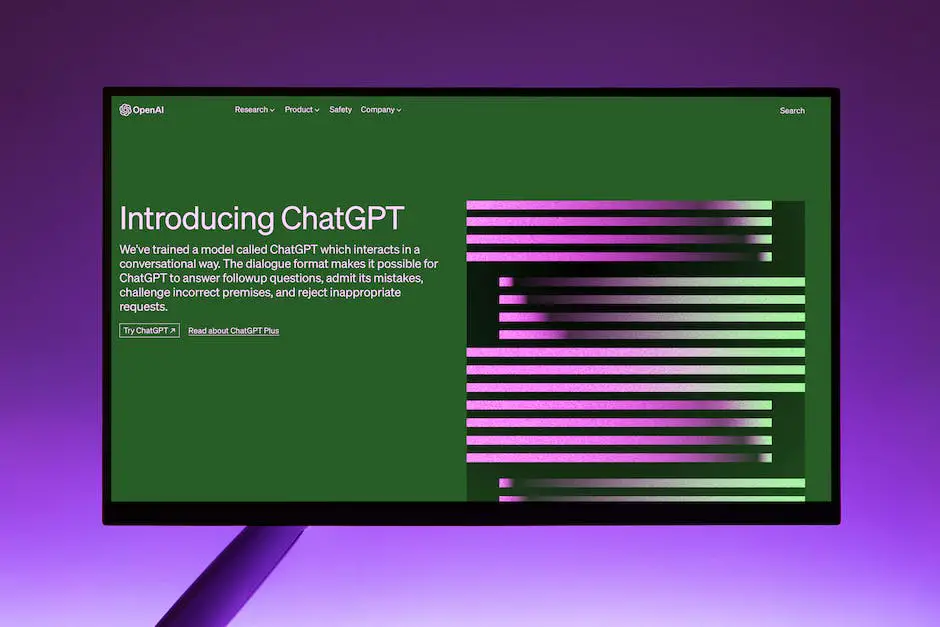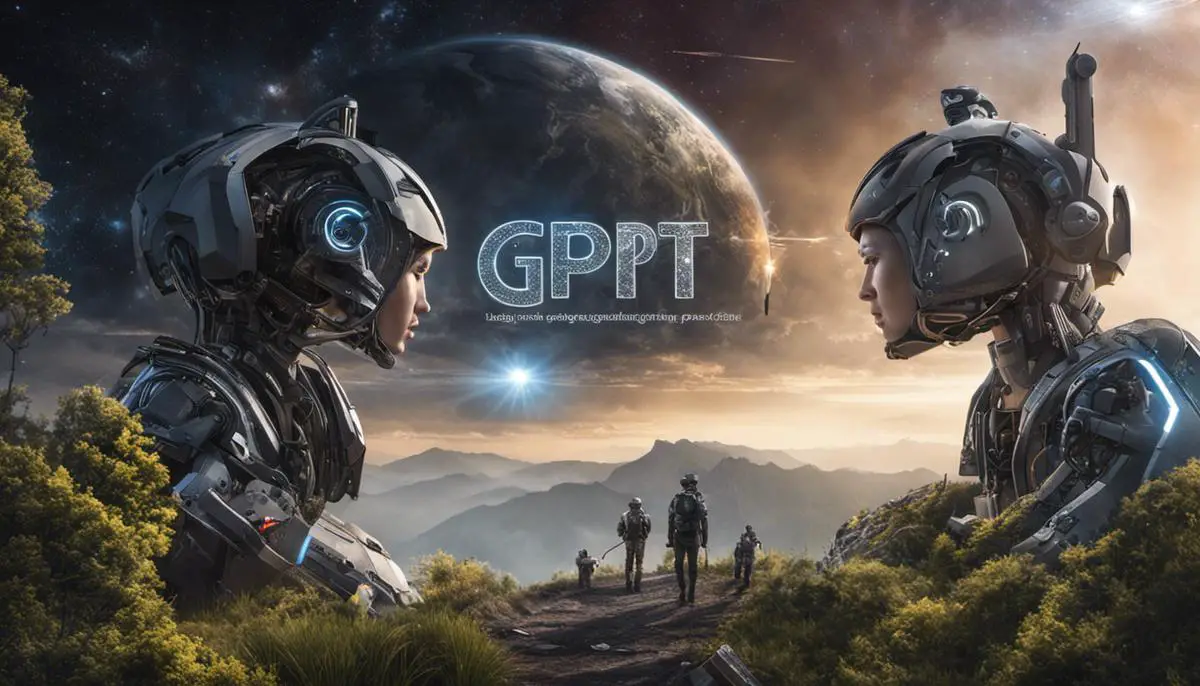The world of artificial intelligence is continually evolving, with innovations such as GPT-3 and its ChatGPT variant playing a pivotal role in revolutionizing how we interact with technology. This deep-dive exploration provides a comprehensive understanding of GPT-3 and ChatGPT, unravelling their core functions and capabilities in machine learning and natural language processing. It underscores the significance of User Experience (UX), elucidating its elements and implications in maintaining and boosting user engagements on websites. With this foundation, the pivotal role of ChatGPT in transforming UX comes to light, demonstrating its features and benefits like personalized interaction, round-the-clock customer assistance, quicker responses, and generation of human-like text. Offering a practical guide on ChatGPT integration into websites, this exploration neatly ties in with inspiring real-world case studies showcasing the impact and potential an AI-driven UX enhancement can bring.
Understanding GPT-3 and ChatGPT
Understanding GPT-3 and ChatGPT
GPT-3, or Generative Pretrained Transformer 3, is an advanced language prediction model developed by OpenAI. It utilizes various machine learning techniques to produce human-like text based on the input it receives. GPT-3 is a part of the transformer-based language models. These models use contextual relationships between words in a phrase for effective prediction.
ChatGPT is an innovative variant of GPT-3, designed to create detailed and contextually relevant conversations. It has the ability to analyze and understand the semantics of a conversation, making it ideal for applications like chatbots. It can generate human-like responses to queries, aiding in building conversational AI that can provide personalized user experiences.
Enhancing Website UX with ChatGPT
ChatGPT can significantly improve user experience (UX) on websites through several ways:
- Personalized Interaction: ChatGPT provides a personalized engagement platform. It considers the context and sentiment of user input to generate responses, fostering a unique and user-specific interaction.
- 24/7 Availability: Chatbots powered by ChatGPT can provide round-the-clock support to users, addressing their queries instantly at any time.
- Efficient Navigation: A ChatGPT bot can guide users through a website, enhancing the website’s navigational efficiency.
- Resolving Queries: These AI chatbots are competent in resolving user queries accurately.
- Engagement and Retention: By delivering immediate and personalized interaction, ChatGPT greatly enhances user engagement and retention.
Why GPT-3 and ChatGPT are Game Changers for AI and UX
The human-like text produced by GPT-3 and ChatGPT is what makes them standout. The ability to understand and generate contextually relevant conversations empowers ultimate user experience, an important aspect for any website. This capability paves the way for advanced levels of user interaction, making these models a game changer in AI and UX.
Moreover, these AI models can learn and evolve with time. They adapt and continuously enhance their conversation quality based on the interactions they have. This learning and adapting capability of GPT-3 and its variant, ChatGPT, holds immense implications for the future advancements of AI and UX design.
Wrapping Up
Developers can greatly enrich the user experience on their websites by incorporating GPT-3 and particularly ChatGPT into their frameworks. Providing constant support, comprehending user inputs, and facilitating personalized interactions are just a few facets of these AI models that make them invaluable for improving website UX.

Importance of User Experience (UX)
Unfolding User Experience (UX)
User Experience, or UX, encompasses all the elements of a user’s interaction with a website, app, or other online services. It fundamentally pertains to how a user feels, what they perceive, and their reactions to a product’s simplicity, efficacy, and relevance. The central tenet of UX is meeting the user’s needs in the precise context in which the product or service is utilized.
Core Components of UX and Their Importance
The core components of UX include usability, accessibility, performance, design/aesthetics, utility, ergonomics, overall human interaction, and marketing.
- Usability: This refers to how user-friendly, intuitive, and easy-to-navigate a website is. Usability is crucial for keeping users engaged and reducing bounce rates.
- Accessibility: This is about ensuring that your website or application is user-friendly and operable by people with disabilities as well, enhancing inclusivity and broadening your user base.
- Performance: The efficiency and speed of your website significantly impact your users’ experiences. Long loading times or frequent crashes can lead to user frustration and attrition.
- Design/Aesthetics: Aesthetically pleasing designs can help engage users and enhance their experiences. Effective design isn’t just about looks; it also involves logical and efficient site organization for ease of navigation.
- Utility: This refers to how well your website or application fulfills a user’s needs or solves their problems. High utility can help attract and retain users.
- Ergonomics: Providing a comfortable and efficient work environment for users contributes to positive experiences, especially in terms of preventing user fatigue and discomfort.
- Human Interaction: Websites should be designed considering various aspects of human interactions such as culture, language, emotion, and cognition.
- Marketing: Effective marketing helps draw users to your website and can shape the way the user perceives and interacts with your product.
Enhancing Website UX with chatGPT
Integrating AI like OpenAI’s ChatGPT into your website can significantly enhance UX. ChatGPT, a language model developed by OpenAI, can understand context and respond intelligently to user inputs, acting like a virtual assistant. Here’s how this can enhance different aspects of UX:
- Usability: ChatGPT makes a website more interactive and user-friendly as it guides users through the site and provides immediate responses to their questions or concerns.
- Accessibility: With its natural language understanding capabilities, chatGPT can communicate with users in a way that feels natural and personal, extending the accessibility of the website to those who may struggle with traditional navigation methods.
- Performance: Chatbots are available 24/7 and can handle multiple interactions simultaneously, improving the overall performance of customer support on a website.
- Utility: ChatGPT, being able to conversationally interact with users, can help them solve issues faster, thus increasing the utility of your website.
- Human Interaction: Despite being an AI, chatGPT, with its ability to understand context and emit human-like responses, bridges the ‘human touch’ gap in virtual interactions.
Considering AI-fueled solutions like chatGPT can go a long way in substantially bolstering the user experience offered by websites. This will naturally result in the enhanced satisfaction of users, their prolonged engagement with the site, and hence, overall, a successful business operation.

How ChatGPT Enhances UX
The Impact of ChatGPT on User Experience Enhancement
Crafted by OpenAI, ChatGPT is a robust language model which employs machine learning to facilitate engaging conversation with users. The integration of this tool into websites paves the way for a dynamic and interactive user experience (UX). Deploying ChatGPT unveils a multitude of benefits for UX, such as personalized engagement, rapid assistance, authentic text generation that echoes human-like responses, all of these factors contribute to a remarkable user journey across the website.
Personalized User Interaction
One of the primary ways that ChatGPT enhances UX is through offering personalized user interaction. It’s capable of understanding and responding to a user’s input in a context-specific manner. This essentially allows for more nuanced and personalized conversations that mirror the kind of dialogue users would have with a human. Not only does this create a more engaging user experience, but it can also help guide users through their journey on a website, assisting them in finding the information they need more efficiently.
24/7 Customer Support
Customer support is a crucial factor in creating an optimal UX. ChatGPT can function 24/7, ensuring that customers from different time zones and schedules always receive prompt and effective support. It essentially replaces or supplements a live support agent when unavailable, handling common customer inquiries, providing immediate responses, and routing complex requests to human agents, thus maximizing availability and maintaining customer satisfaction.
Quicker Responses
The integration of ChatGPT speeds up the process of responding to user queries. Since ChatGPT can process numerous queries simultaneously, users don’t have to wait in queues for their turn to get their questions answered. This swift response capacity significantly reduces user downtime, enhances the user experience, and ensures users feel heard and valued.
Generation of Human-like Text
A unique and powerful feature of ChatGPT is its ability to generate human-like text that is both coherent and contextually relevant. It achieves this by leveraging advanced AI models trained on diverse internet text. But beyond just outputting text, it can generate creative, and even humorous responses, allowing for a user experience that is as close as possible to interacting with a human. This makes ChatGPT an excellent tool for tasks like content creation, storytelling, or support tasks that require a human touch.
Conclusion
Revolutionizing website user experience is made possible through the integration of AI-based chatbots like ChatGPT. By facilitating custom-tailored interactions, delivering round-the-clock customer service, responding swiftly to queries, and producing text that mirrors human-like conversation, chatbots amplify the value of online interactions. The adoption of such technology can lead to heightened user satisfaction, fortified customer loyalty, and a sweeping improvement in overall website UX. Therefore, incorporating tool like ChatGPT is truly an investment towards an enhanced user experience.

Implementing ChatGPT in Your Website
Getting Started with ChatGPT
The first step to enhancing your website with ChatGPT is setting up the chatbot. What you’ll need is access to chatbot models like GPT-3 that OpenAI offers. After acquiring access, you’ll then proceed to create an instance of the model. You will then provide input parameters for a tailored conversation experience. Finally, you’ll use OpenAI’s API to elicit relevant responses. This makes the process of champioining your user experience efficient and manageable.
Training the Model
Training the ChatGPT model involves supplying the system with a conversation history, including both user and assistant turns, thereby instructing the model about the nature of the conversation and relevant responses. Also, it’s important to note that the model doesn’t keep track of past requests, meaning that every detail needed by the model has to be included in the conversation history. Making the messages clear, concise, and easy for the model to comprehend will result in a better and smoother user experience.
Successful Interactions with Users
Efficiency in user interaction using ChatGPT can be achieved by using system level instructions that guide the model’s behavior throughout the conversation. To ensure successful interactions with users, the model should be instructed to ask clarifying questions whenever the user’s request is ambiguous. Additionally, controlling the ChatGPT model’s randomness and maximum response length settings can enhance chatbot sensitivity and response quality, shaping a pleasant user experience.
Prompt Engineering
Prompt engineering is one method to guide the model’s responses. Here, you can specify the desired answer’s characteristics, set up the user’s question in a specific way, or chain user instructions to refine the output from ChatGPT. It’s also important to test multiple versions of a prompt to ensure the best user-bot interaction.
Ethical and Responsible AI Guidelines
While implementing ChatGPT, maintaining ethical standards and rules is obligatory. Privacy should not be compromised, and users must be informed of your chatbot’s capabilities and limitations. Guidelines provided by OpenAI emphasize transparency, safety, and observance of technical limits. The technology should not be manipulated to harbor harmful bias, falsehoods, or facilitate illegal matters.
Mitigating Risks and Failures
Given that ChatGPT can sometimes produce incorrect or nonsensical answers or might not ask clarifying questions for ambiguous queries, steps need to be taken to mitigate these risks and failures. OpenAI provides a moderation feature that prevents content that violates OpenAI’s usage policies from being shown, assisting in substantial risk mitigation.
The Continuous Journey of AI Implementation
Diving into the world of AI is not a one-off decision but an ongoing journey. Gaining valuable insights from early implementations, deliberately tweaking, and progressively ameliorating your models is a key requirement. This cycle of constant feedback and improvement plays an essential role in ensuring a user experience that is both engaging and positive.

Case Studies of Successful ChatGPT Implementation
Amplifying Website UX using ChatGPT
Pushing the boundaries of UX is ChatGPT, a cutting-edge language algorithm. Harnessing the power of machine learning, it comprehends and reproduces text in an incredibly human-like manner. This has been particularly game-changing in the customer service and chat support sectors. Numerous businesses have therefore embraced and seen significant UX improvements on their websites with the successful integration of ChatGPT.
Case Study: ShopBot
ShopBot, an e-commerce platform, implemented ChatGPT as a virtual assistant to guide customers through their online shopping process. This addition not only improved the UX through a more interactive and responsive website but also resulted in a significant decrease in bounce rates. Previously, customers faced issues regarding product search and had to navigate multiple pages, leading to higher website dropouts. The integration of ChatGPT allowed for a smoother search process and faster responses, facilitating customers and leading to a more seamless online shopping experience.
Case Study: Bento Tech Solutions
Bento Tech Solutions is another company that registered remarkable improvement in their UX following the implementation of ChatGPT. The company’s customer service previously reported frequent delays in responding due to a high volume of queries. After integrating ChatGPT, Bento managed to maintain a consistent, 24/7 customer support system, responding promptly to customer issues and inquiries. This implementation not only elevated user satisfaction but also resulted in higher user retention rates.
Case Study: Green Energy Inc.
Green Energy Inc., an energy solutions company, promoted their green initiatives by integrating ChatGPT on their website in different languages to reach a wider audience. They noted a significant increase in user engagement and conversion rates. The multilingual ChatGPT attracted non-English speaking audiences, enabling them to interact comfortably and understand the company’s green initiatives more effectively. UX was significantly improved with the addition of ChatGPT that resulted in personalized, user-friendly, and inclusive customer interactions.
How ChatGPT Improves UX
In all case studies, it’s clear that implementing ChatGPT improves website UX by providing prompt, accurate, and personalized customer service. The ability of ChatGPT to understand and generate human-like text leads to smooth, enhanced customer interactions resulted in improved customer satisfaction, user retention, and conversion rates. Also, the capability of ChatGPT to interact in multiple languages enhances inclusivity and ensures a broad user base can comfortably interact with the website, adding to overall enhanced UX.
Intrinsic Benefits of ChatGPT Integration
ChatGPT integration in websites also has several intrinsic benefits. It reduces the burden on human customer service agents, allowing them to focus on more complex queries. It provides round-the-clock customer support, ensuring immediate and accurate responses to all inquiries. Furthermore, it can handle multiple interactions concurrently, improving service efficiency and reducing waiting times. It enables small businesses to match the level of customer support offered by larger corporations, thereby leveling the playing field. Lastly, its ability to learn from interactions allows for continuous improvement in service delivery, thus continuously enhancing UX over time.

Emerging technologies like GPT-3 and ChatGPT hold immense potential in not just revolutionizing AI, but also significantly improving the way users interact with online platforms. Implementing these AI models can lead to a more personalized, responsive, and satisfying user experience, thereby increasing user engagement and conversions. Not merely a hypothetical proposal, this potential is underpinned with real-world case studies showcasing the successful use of ChatGPT in enhancing UX. Striding forward, these tools not only offer promising prospects to businesses and developers for shaping a more interactive, enjoyable, and successful user journey but also hint at a future where artificial intelligence and human interaction become increasingly intertwined.
